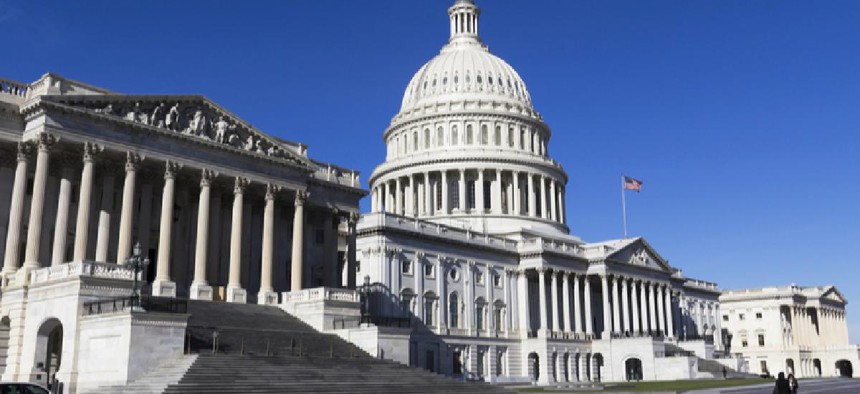House tees up continuing resolution to avoid Oct. 1 shutdown
Protected leave for federal health workers and a USCIS funding measure are included in the stopgap bill.
The House of Representatives is expected to vote this week on a continuing resolution to keep the government funded through Dec. 11, avoiding a shutdown in the month before the national elections.
The stopgap funding measure released Sept. 21 maintains funding for programs and agencies at fiscal years 2020 levels, with a few exceptions. The bill also renews provisions of public health and transportation programs that were set to expire Nov. 30.
"While the House did its job and passed bills funding nearly every government agency, Senate Republicans did not even begin the appropriations process," Rep. Nita Lowey (D-N.Y.), the chairwoman of the House Appropriations Committee, said in a statement. "Because of their irresponsibility, a continuing resolution is sadly necessary. This clean continuing resolution keeps government open while giving Congress additional time to negotiate annual appropriations bills that will invest for the people."
According to multiple press reports, the bill is the result of House and Senate negotiations and as of last week had the support of Treasury Secretary Steven Mnuchin. One hitch threatens to derail easy passage of the measure – a conflict between Democrats and Republicans about extending payments to farmers and ranchers and extending special food benefits to recipients of free or reduced-price school lunches authorized under the Families First Coronavirus Response Act of 2020. Failure to agree on extensions could result in the House and Senate passing different bills, requiring reconciliation or the House to vote on a Senate bill as a substitute amendment if the measure is to pass before the Sept. 30 shutdown deadline.
Leave and special spending
The continuing resolution authorizes members of the Public Health Service -- a commissioned corps of doctors, nurses and other health care workers based across the government at multiple agencies -- to retain annual leave in excess of the 60 days because of the demands of the COVID-19 pandemic. Members of the Public Health Service will be allowed to retain a total of 85 days of accumulated leave under the measure through the end of fiscal year 2023. Even if there is a shutdown and the measure passes after Sept. 30, the leave provision will retroactively preserve excess leave accrued in fiscal year 2020.
Additionally, the bill grants anomalies to a few agencies allowing them to fund certain programs at a tempo faster than a straight continuing resolution would permit. The Census Bureau is able to move money needed to complete the 2020 population count, although the bill does not offer a deadline extension sought by many lawmakers to account for time lost in the enumeration to coronavirus restrictions.
The bill also gives the Department of Veterans Affairs the authority to spend as needed to maintain the pace of implementation of its electronic health record program, including contracting costs and employee salaries.
The bill also includes the Emergency Stopgap USCIS Stabilization Act, which raises the fees on premium processing by the U.S. Citizenship and Immigration Service in part to help close a funding gap at the agency. The agency had planned to furlough more than 13,000 employees in August because of a shortfall in funds. To avert the furlough, the agency cut contract spending and increased fee collection, but it said that operations would suffer and that furloughs could be possible in the future.
The House bill also limits what the Defense Department can do with continuing resolution funding: new projects, new production and increases in production on existing programs are excluded for the duration of the stopgap measure. The bill also doesn't appropriate funds for contractors sidelined by the pandemic, as was authorized by Section 3610 of the Coronavirus Aid, Relief and Economic Security Act signed in March. The Pentagon has projected those costs as being more than $10 billion. DOD and contractor groups have been pressing Congress for a dedicated funding stream for those payments, which otherwise would have to come from program funds. The Senate could still include coverage for these costs in its continuing resolution, but that funding may have to wait for another round of COVID relief legislation.
This article first appeared on FCW, a Defense Systems partner site.





